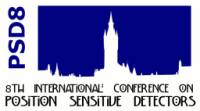Speaker
Dr
Eiji Yoshida
(National Institute of Radiological Sciences)
Description
Conventionally, PET scanners are used for the scintillator has high effective atomic number. Recently, novel scintillators like LaBr3 have excellent timing and energy resolutions were developed. LaBr3 has high performance for the PET scanner, but effective atomic number is lower than LSO. On the other hand, we developed the scatter reduction method using depth-of-interaction (DOI) information and energy information for high sensitivity. Sensitivity of the PET scanner with LaBr3 can be improved using this method. In this work, our method is applied to the whole-body DOI-PET scanner with the LSO/LaBr3 phoswich detector using GATE . From simulation results, the number of true coincidences can be increased while keeping low scatter and low random coincidences by using the DEEW method. NECR can be improved by 20-60 % for the whole-body DOI-PET scanner. Using the DEEW method, sensitivity of the PET scanner with low effective atomic number can be improved.
Author
Dr
Eiji Yoshida
(National Institute of Radiological Sciences)

